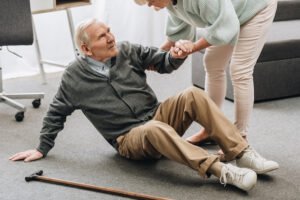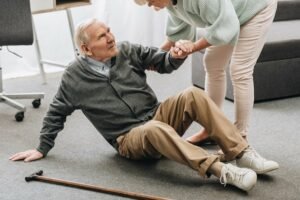It?s December and 2022 is right around the corner. Have you started thinking about your new year?s resolutions yet? In 2020, the most common resolution was to exercise more. (This same resolution was made by 46 percent of those who made new year?s resolutions!) If exercising more is one of your new year?s resolutions for 2022, good for you! However, it is important to be aware that exercise is linked to hearing loss. Don?t worry too much though?you can exercise in safe ways that protect your hearing and keep you fit.
How are exercise and hearing loss connected?
Anyone who has stepped foot inside a gym knows it isn?t the quietest environment. You might hear the sound of dropped weights, the noise created by machines like ellipticals and treadmills, or the incredibly loud music being blasted by an exercise class like Zumba. Add on top some conversations and the fact that most gyms play music over the speaker system, and you have one noisy place.
Exercise is linked to noise-induced hearing loss due to these very sounds. Audiologists have compared the potential noise of a dropped or smashed weight to the hearing danger posed by a shotgun blast or airbag deployment. Put that noise on repeat for 30-60 minutes, 3-5 times a week, and you have a recipe for noise-induced hearing loss. Furthermore, many exercise classes blast music at levels that are way above normal, safe volumes?often reaching 90-100 dB. If you have ever left the gym with ringing ears or muffled hearing, you have experienced damage to your hearing due to excessive noise.
Another risk to your hearing is lurking in the weight room. Heavy exertion, like straining when lifting weights, results in intracranial pressure (pressure in the brain). This translates to pressure in the ears. If you hold your breath while lifting, this increases the pressure even more.
This increased pressure in the inner ear can lead to a perilymphatic fistula (PLF), which is basically a small tear or defect in the thin membrane between the inner ear and middle ear. In most cases, people with a PLF are not immediately aware. Hearing changes typically occur later, when the strain of subsequent workouts causes fluid to leak into the middle ear through the tear. Symptoms of a perilymphatic tear include dizziness, fullness in the ears, tinnitus (ringing in the ears), or sensitivity to normal noises.
How can you safely exercise while protecting your hearing?
There are a few simple tips you can follow to protect your hearing while you exercise:
- If you strain while lifting weights, reduce the weight you are lifting.
- Never hold your breath while lifting weights.
- Wear earplugs while exercising.
- Keep your headphones or music at a reasonable volume.
- If you attend a gym or exercise class with music that is too loud, ask the instructor to lower the volume.
- Do not drop or bang weights while lifting.
- Do not participate in sports that can result in blows to the head.
- If you have hearing loss, wear your hearing aids while exercising.
Of course, you can also choose forms of exercise that are gentle on the ears, like yoga, dancing, nature walks, hikes, and more.
If you notice any symptoms of hearing loss or hearing changes after exercising, do not hesitate to contact your hearing professional. To learn more about how you can safely exercise while protecting your hearing, please contact our office today.




